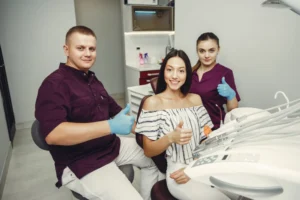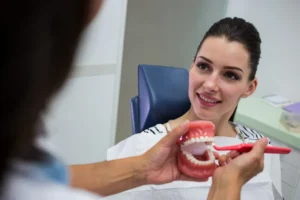Customizing General Dentistry For Patients With Sensory Sensitivities
You might find visiting the dentist overwhelming, especially with sensory sensitivities. You’re not alone. Many like you need a Scottsdale dentist who understands and adapts to your specific needs. You deserve a healthcare experience that respects your comfort. Lighting, sounds, and textures can all be adjusted to ease your visit. Dentists trained to accommodate sensory sensitivities can transform your appointment. Communication is crucial. Discuss your triggers openly with your dentist. They can adjust their approach and enhance your experience. Simple changes can bring significant relief. You’ll feel less stressed and more in control. This consideration fosters a supportive, caring environment. You’re entitled to a dental visit that prioritizes both your oral health and overall well-being. Choosing the right dentist ensures you receive personalized care. With understanding and adaptability, you can face dental appointments with confidence and ease. Your comfort is always essential during dental care.
Understanding Sensory Sensitivities
Sensory sensitivities affect many individuals differently. Common triggers include bright lights, loud noises, strong smells, and touch. Understanding these can help you and your dentist create a calming atmosphere. This involves recognizing specific sensitivities and tailoring dental care accordingly. Opt for offices where you control the environment to reduce anxiety.
Adjustments for a Relaxed Visit
There are several practical adjustments dental offices can implement for patients with sensory sensitivities:
- Lighting: Soft lighting creates a relaxing environment. You may request dimmed lights or use sunglasses to reduce glare.
- Sound: Noise-canceling headphones or playing soothing music can minimize disruptive sounds.
- Texture: Request textured dental tools or soft materials to reduce discomfort.
These small changes make a substantial difference in how you experience dental care. Discussing these options beforehand allows your dentist to prepare and ensures you feel at ease during your visit.
Communication Is Key
Open communication with your dentist is essential. Before your appointment, outline your specific needs and sensitivities. This dialogue helps your dentist tailor their approach. They’ll offer solutions and adjustments that make your visit smoother. Remember, thorough communication builds trust and comfort, ensuring a positive experience.
Comparison Table: Traditional vs. Customized Dental Visits
| Aspect | Traditional Visit | Customized Visit |
|---|---|---|
| Lighting | Standard bright lights | Adjustable lighting |
| Sound | Normal clinic noise | Noise-canceling headphones |
| Tools | Standard tools | Textured or soft tools |
| Communication | Limited discussion | Open, ongoing dialogue |
Resources for Further Support
There are numerous resources available to help you navigate dental care with sensory sensitivities. The National Institutes of Health offers guides and support for managing healthcare experiences. Additionally, the Centers for Disease Control and Prevention provides information on sensory processing and healthcare accommodations. These resources equip you with knowledge and strategies to improve your dental visits.
Building a Trusting Relationship
Find a dentist who listens and responds to your needs. A trusting relationship lays the foundation for effective and pleasant dental care. Choose professionals committed to understanding sensory challenges. When comfort is prioritized, your dental care enhances both your oral health and peace of mind.
Ensuring a Positive Experience
Your dental visits don’t need to be stressful. With preparation and the right support, you can achieve a positive experience. Customize your appointments by addressing lighting, sound, and textures. Advocate for your needs and build open communication with your dentist. By doing so, you take charge of your dental health journey, ensuring comfort and care tailored to you.

Deepak Sharma
Namaste! I’m Deepak Sharma, the creative mind behind SocialFunda, your go-to hub for Facebook bios, captivating captions, Instagram bios, and a treasure trove of Hindi Shayari. As a digital enthusiast, I am passionate about curating content that adds a touch of flair to your online presence.







